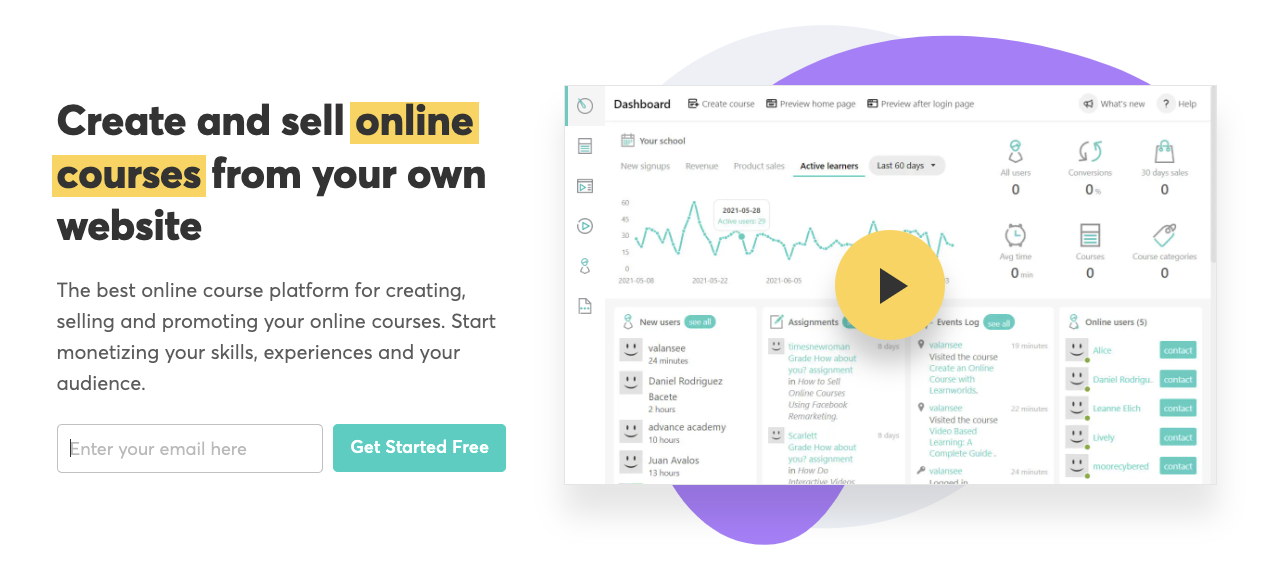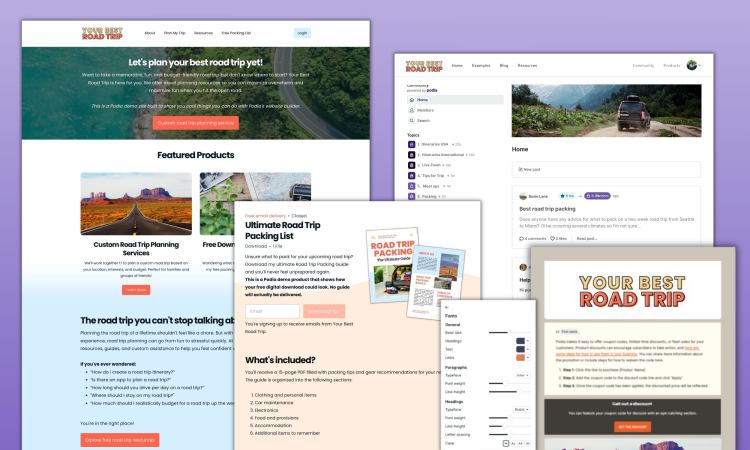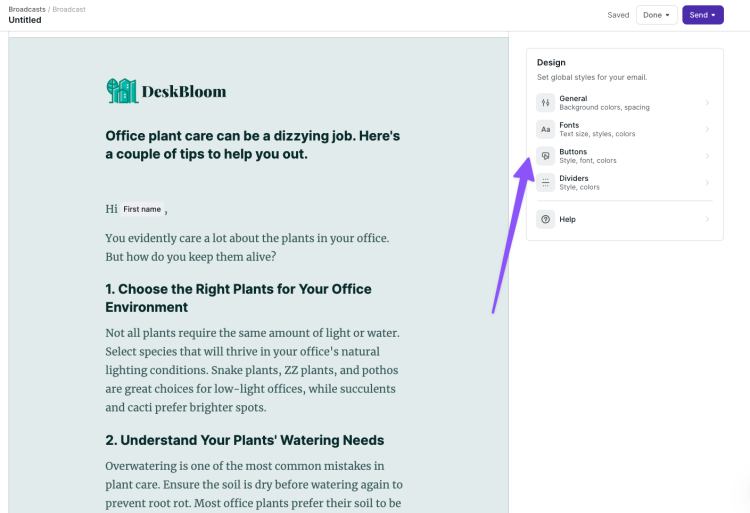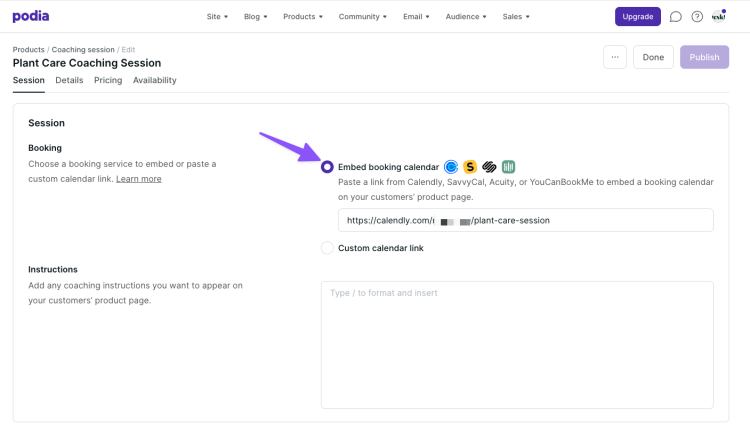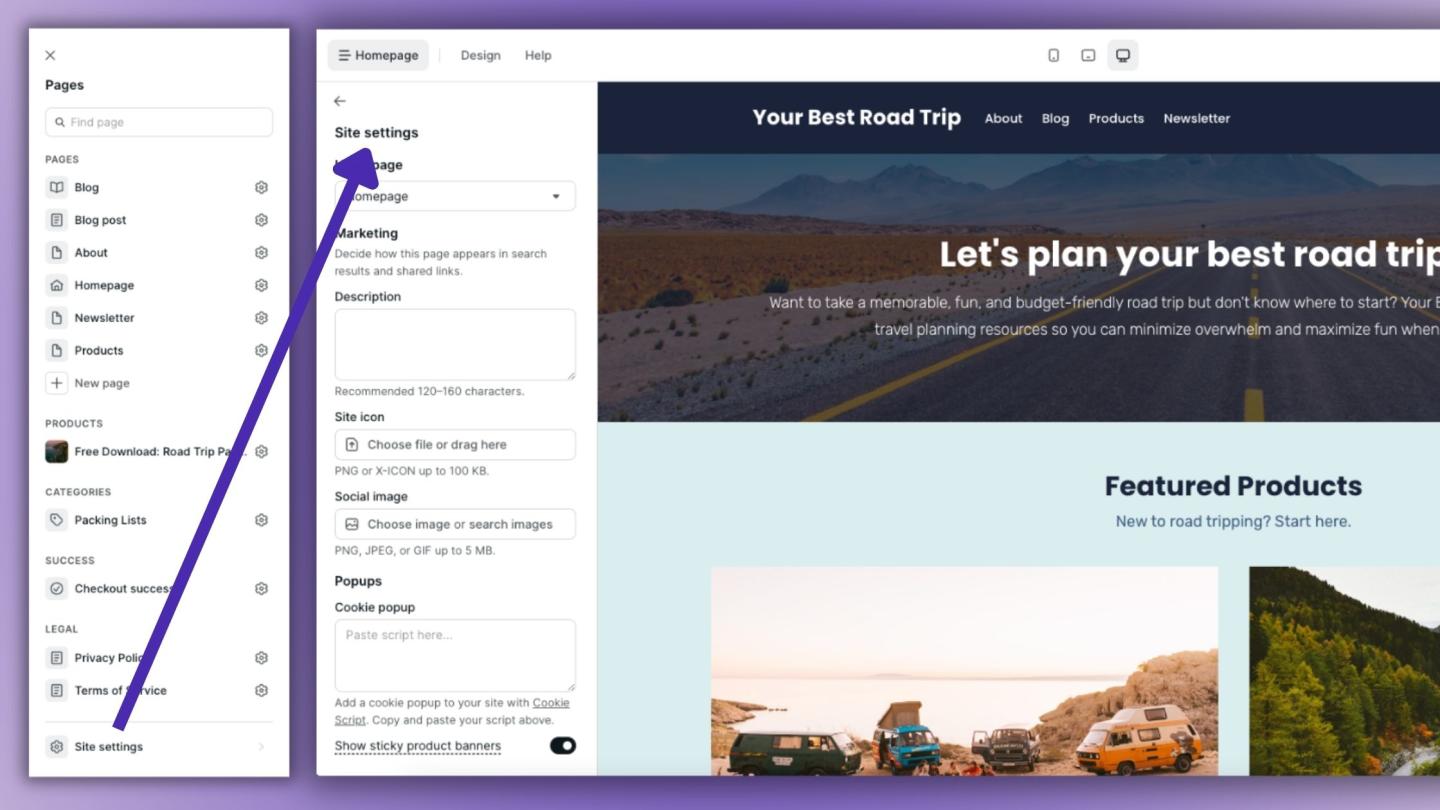Our view at Stack - Podia shines with its all-in-one platform for digital commerce, offering zero transaction fees, email marketing, affiliate marketing, and live chat support. It’s known for unlimited courses and products, embeddable checkouts, and a community feature to engage users. It now has blog functionality also.

Two years ago, Podia announced our free plan, allowing anyone to use the platform whether they were ready to sell anything or not.
Our hope was that this plan would be a win/win for our customers and for our business: up-and-coming business owners would have a free place to get their ideas ready for launch, and we would be the platform of choice for their businesses as they matured and needed more advanced features.
With two years of data and experience, we can confidently say that this experiment didn’t result in a win/win, or even a win/lose. The free plan was a worse deal for users, and a worse strategy for Podia.
Here’s why.
Podia’s customers are entrepreneurs.
Entrepreneurship takes work.
But to succeed as an entrepreneur also requires that at some point, you launch. You need to take the leap.
A free plan, it turns out, makes it too easy to build without ever being forced to take the leap. It allows staying busy to get in the way of putting yourself out there and actually bringing value to the market.
Before we launched the free plan, Podia operated on a free trial model. You try it for free for a short while, and then if you want to keep using it, you pay.
This pressure created an incentive to launch, to get your product to market, to collect feedback and iterate, improve, and start growing a real business.
The early launches were often messy, unfinished, and as “beta” as can be, but they were a leap. And without those leaps, some of our most successful customers would never have gotten to where they are today.
Instead of helping entrepreneurs, the free plan discourages would-be entrepreneurs from taking the leap. We see this in the rates at which free users become paying customers, and in the actual sales figures: less than 0.5% of the sales volume on Podia’s platform comes from free accounts.
On Podia’s side, we’ve thrown a lot of things at this challenge to figure out how we can get free users to become successful.
Over the past two years, a significant part of our internal focus has been on improving our product for new users, often at the expense of building features our paying customers were asking for.
It’s become clear that while we’re confident we can build great software for entrepreneurs who have taken the leap, we can’t force anyone to launch. And the most effective way we’ve ever incentivized our customers to launch is what we already had in place two years ago: requiring them to put some skin in the game and pay for Podia if they want to keep going.
And so today, we say goodbye to our free plan, and hello to a 30-day free trial for new customers.
We say goodbye to throwing resources at nudging people to launch, and hello to investing 100% of our resources into building the best platform on the planet for solo entrepreneurs who have taken — or are ready to take — the leap.
Our commitment is to our paying customers. We’ve made some significant changes to our roadmap and internal priorities to ensure that we’re building what Podia’s customers need, and we’ll have a lot more to share here in the coming months as these updates begin to roll out.
And if you’re thinking about launching your business and need a place to host and manage everything, we hope you’ll give Podia a try. It’s free to try…but then it’s time to take the leap.
If Podia is of interest and you'd like more information, please do make contact or take a look in more detail here.
Credit: Original article published here.









